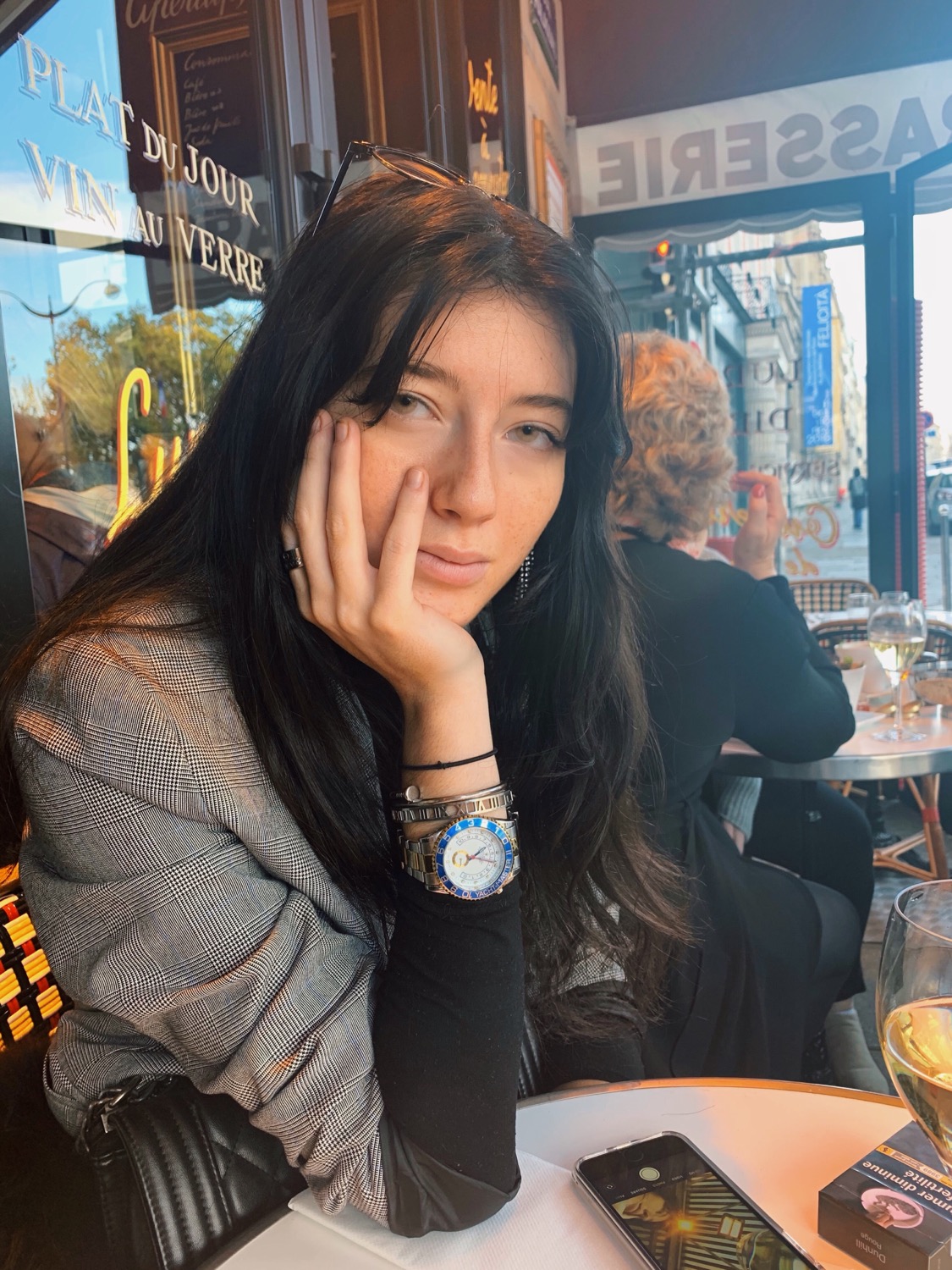XU YANG’S ‘FORGET ME NOT’ AT CHÂTEAU DE LANTHEUIL
- Victoria Comstock-Kershaw
- Jun 18
- 5 min read

Photography courtesy of Bater & Street/von Goetz
There’s something vaguely cinematic about arriving at a château in Normandy on a June afternoon, train legs still warm from St Pancras and the champagne not yet poured. But Xu Yang’s Forget Me Not isn’t content with cinematic—it goes for the baroque, the grotesque, the sentimental, and the absurd, often all at once. Conceived, curated, and staged by Lucy von Goetz, who also led the production of the exhibition, the show unfolds across the salons of the Château de Lantheuil as a disarming procession of wigs, dogs, dumplings, orchids, feathers, shrikes, operatic gazes and golden fragments. It is camp and ceremonial, mournful and excessive. It is, above all, a work of memory: not as archive, but as performance.
Photography courtesy of Bater & Street/von Goetz
The show’s title is drawn from the flower long associated with memory and modesty. Across cultures, the forget-me-not evokes a quiet kind of remembrance bound less to monuments than to hands, rituals, and domestic traces. Xu Yang seizes this ethos and unfurls it into a panoramic, cross-cultural lexicon. The personal becomes epic. The intimate becomes imperial.

Photography courtesy of Bater & Street/von Goetz
Xu Yang’s artistic language is maximal, but never gratuitous. Beneath the sugar-pink wigs and velvet lapdogs is a meticulous historiographic instinct that lures the viewer in with charm before snapping shut with quiet brutality. This is most evident in her Society Portraits, where jewel-encrusted Chihuahuas and smug Pekingese sit atop thrones of silk and feathers. These are not portraits in oil; they are allegories of power stripped of pretense. Based on the dogs that “live better than most people” Xu has encountered in West London, the animals become avatars of inherited cruelty: bred for dependency, aestheticized for pleasure, utterly removed from the ecosystems that once gave them meaning. In Xu’s world, they become a mirror, a bourgeois relic, a stand-in for a femininity so domesticated it becomes absurd. But there is affection too, a certain sadness in the artificiality. The chateau’s proprietors own absurdly tiny and well-loved dog, Hermes, skitters across the wooden floor as we are guided between the portraits. Even as these canine simulacra lounge under powdery poufs, we are reminded that they, like their keepers, are captives of taste.

Photography courtesy of Bater & Street/von Goetz
A similar duality emerges in the recurring motif of the wig. Xu builds them into still-lifes, monuments and reliquaries, bristling with curls, pearls, blossoms, and birds, reaching back to Marie Antoinette’s infamous poufs while invoking Chinese opera masks and Western drag culture. The wig is theatre, but it’s also armour. Xu selects pink deliberately, not for its femininity, but for its instability. As von Goetz notes, pink was once a colour of masculine youth, before 20th-century capitalism and American gender reveal culture recoded it as girlhood. In Xu’s hands, it becomes untethered again, a shade of refusal. Xu doesn’t just modernise vanitas, she feminises it, queers it, and drags it into the Rococo – among the pink coils and decorative fruits, Xu places symbols of mortality and threat: the shrike, a beautiful songbird known for impaling its prey on thorns; the Asian hornet, predator of bees; the snail, edging toward destruction. Even the bees, longstanding emblems of industry and sweetness, are drawn toward perfume, unknowingly into danger.
Photography courtesy of Bater & Street/von Goetz
This precise, unflinching semiotic volatility is key. Much of the work functions as an affective measure of re-imagined memento mori: porcelain chalices in the show mimic Chinese export ware, but they are made in the European idiom—riffing on Dresden mimicry, corrupted baroque, the violence of replication. Xu’s Pandora’s jars reference both Greek myth and Chinese ritual vessels. They hold no treasure but little golden spheres of “hope,” the last thing left in the mythic box of suffering. At several points, Xu folds herself into this web of motifs: her ceramic dumplings, hand-formed and glazed to gleam with uncanny realism, are imprinted with her fingerprints, echoing the family ritual of dumpling-making and calcified into fragile relics. In the artist’s telling, her aunt didn’t understand why she made them. “I can make you dumplings whenever you want,” she said. But that was the point: these were not for eating. They were for remembering.

Photography courtesy of Bater & Street/von Goetz
Memory, here, is neither sentimental nor monumental. It is material, and often absurd. Her Pegasus painting, based on Stubbs’ infamous Whistlejacket—A Dream of Everything That Was Wanted—is both equestrian fantasy and tragedy-in-pink, combining Barbie mythology with Greek epic. Medusa must die for the creature to be born. It is an escape, yes, but not without blood. Ultimately, Xu knows what the Surrealists knew: that the dream image is always entangled with the structures of power that repress it. “He’s not free.” she notes of the myth. “He’s captured by Perseus. His mother died for him to be born.”

Photography courtesy of Bater & Street/von Goetz
What sets this exhibition apart is not just the beauty of the works, but their temporal unruliness. The paintings quote the Dutch Golden Age, the Rococo, the Qing Dynasty, and 21st-century Soho drag all at once. Xu’s references are unapologetically layered: from Ruysch’s still lifes to Roland Penrose’s surrealist hair, from porcelain import routes to TikTok dog couture. The result is a temporality closer to the dream-state than the timeline, what Walter Benjamin might call Jetztzeit, a charged now in which history flashes up.

Photography courtesy of Chateau de Lantheuil
The setting intensifies this collapse. The Château de Lantheuil is a place dripping with ancestral performance: portraits, paneling, gardens arranged like a memory palace. Xu’s work doesn’t blend into this context. It flickers against it, like candlelight on silk. Her dogs stare out at the family portraits. Her chalices gleam beside real silver. Her dumplings rest in vitrines that once housed relics of empire. It is an elegant haunting.

Photography courtesy of Bater & Street/von Goetz
Over lunch in the formal gardens, dumplings were discussed alongside wigs, snails, death. Xu speaks with calm clarity, unbothered by the excess her work evokes. Her humour is quiet. Her politics are precise. “Some of the exchanges in culture can be really cruel in history... and similar things are still happening today, but in a more subtle manner.” she notes. “I want [to] remind people that our physical body is going to be gone one day. So what’s important to you, what’s precious to you?”
Later, in the Salon Louis XVI, I stare too long at a snail creeping towards entropy and feel an unexpected sadness. Xu’s work does that. It lures you in with prettiness, and then lays a hand on your back, cold and unmistakably human.
Xu Yang (b. 1996, Shandong) lives and works in London, UK. She studied Fine Art Painting at Wimbledon College of Arts (UAL) 2015-18, and graduated with an MA in Painting from the Royal College of Art in 2020.
von Goetz is an art advisory that enhances the lives of artists and collectors by investing in the contemporary artists of the future, working closely with private individuals, corporates, interior design studios, and hospitality groups to offer a service that blends discretion, meticulous research, and a sense of fun.
Victoria Comstock-Kershaw is a London-based art critic and journalist.
















